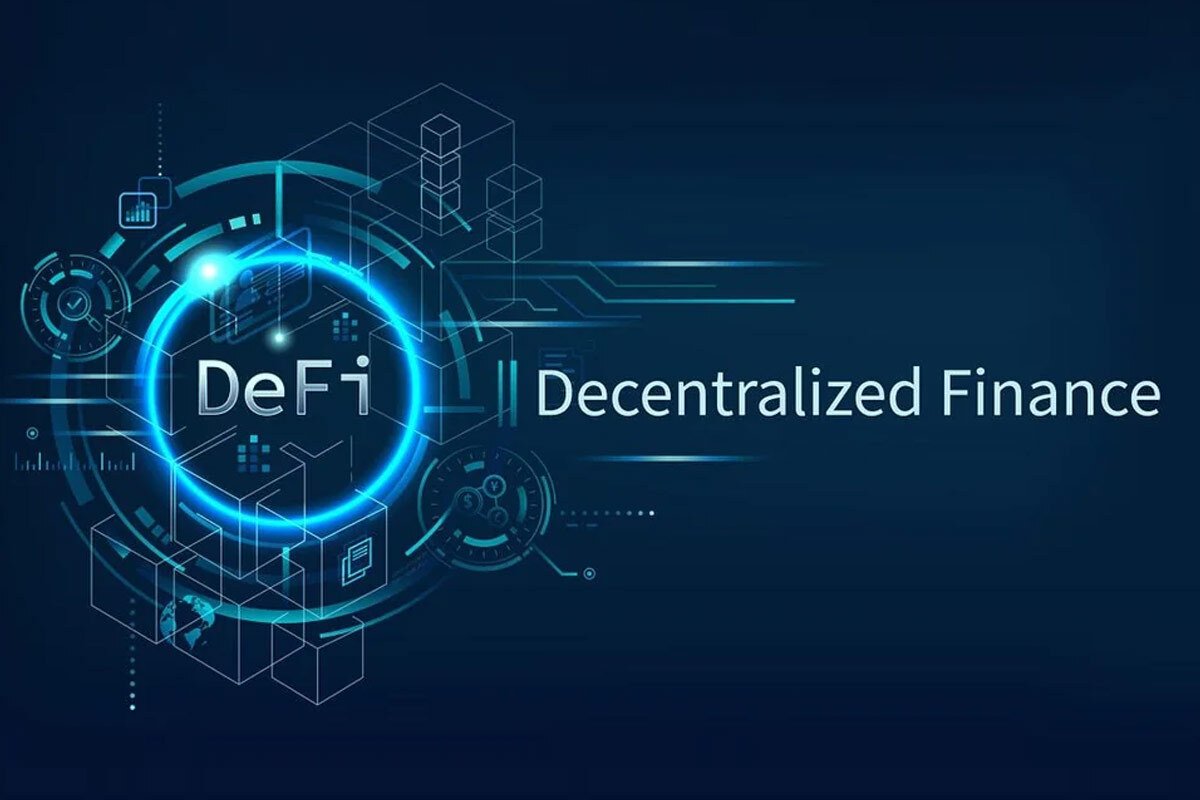By Terry Ashton, updated February 17, 2025
For decades, traditional banking (often called TradFi) has been the main way people manage money. Banks handle loans, savings, and financial transactions, acting as intermediaries between individuals and their funds. However, Decentralized Finance (DeFi) is introducing a new way to access financial services without relying on banks. DeFi revolutionizes financial services by using blockchain technology and smart contracts, allowing users to trade, borrow, and lend without intermediaries.
This guide explores how DeFi is changing the financial landscape, covering key topics such as DeFi vs TradFi, lending and borrowing protocols, decentralized exchanges (DEXs), yield farming, and smart contract risks.
DeFi vs TradFi: Key Differences
The biggest difference between DeFi and TradFi lies in control. Traditional finance relies on banks, payment processors, and governments to regulate transactions. While this provides stability, it also limits access, increases costs, and requires users to trust third parties. DeFi revolutionizes financial services by eliminating intermediaries and giving users full control over their assets through blockchain technology.
DeFi, on the other hand, eliminates these intermediaries. Instead of using a bank to approve transactions, smart contracts on blockchain networks handle everything automatically. This makes financial services more accessible to people worldwide, even those without a bank account. It also improves transparency, as all transactions are recorded on a public ledger. However, DeFi comes with its own risks, such as smart contract bugs and volatile asset prices.
How Lending and Borrowing Work in DeFi
Lending and borrowing protocols are among the most popular DeFi applications. In TradFi, banks act as middlemen, deciding who qualifies for a loan and what interest rate they receive. They also charge fees for their services.
DeFi changes this system by allowing users to lend and borrow directly through blockchain-based platforms like Aave and Compound. Lenders deposit cryptocurrency into smart contracts, earning interest over time. Borrowers, on the other hand, must provide collateral—usually in the form of crypto assets—to secure a loan. If the value of their collateral drops too much, their assets may be liquidated. This system eliminates the need for credit checks and allows anyone with an internet connection to participate.
What Are Decentralized Exchanges (DEXs)?
A decentralized exchange (DEX) is a platform that enables users to trade digital assets without relying on a central authority. Unlike traditional stock markets or centralized crypto exchanges, DEXs operate on smart contracts that automatically match buyers and sellers.
Popular DEXs like Uniswap, SushiSwap, and PancakeSwap allow users to trade cryptocurrencies directly from their wallets. This means they retain full control over their assets, reducing the risk of exchange hacks or account freezes. Additionally, DEXs often have lower trading fees compared to centralized platforms. However, they also come with challenges, such as price fluctuations and lower liquidity for certain assets.
Yield Farming: Maximizing Returns in DeFi
Yield farming is a DeFi strategy that allows users to earn passive income by providing liquidity to decentralized finance protocols.When users deposit their assets into liquidity pools, the platform uses these funds for trading, lending, or borrowing. In return, users receive rewards in the form of interest or governance tokens.
For example, if someone contributes to a liquidity pool on Uniswap, they earn a percentage of the trading fees. Some investors move their funds between different platforms to maximize profits, a practice known as “yield farming” or “liquidity mining”. While this strategy can generate high returns, it also comes with risks such as impermanent loss and sudden price drops.
Understanding Smart Contract Risks in DeFi
While DeFi offers many advantages, it is not without risks. One of the biggest concerns is smart contract risks. Smart contracts are self-executing programs that automate transactions, removing the need for third parties. However, if a smart contract has a coding flaw, it can be exploited by hackers.
Unlike traditional banks, DeFi platforms do not offer refunds or customer support if something goes wrong. If a smart contract is compromised, users can lose their funds permanently. To reduce risk, it’s essential to use well-audited protocols, research security measures, and never invest more than you can afford to lose.
Conclusion
DeFi is revolutionizing the financial industry by removing traditional barriers and making financial services more accessible. Unlike TradFi, which relies on banks, DeFi uses blockchain technology to offer direct lending, borrowing, and trading opportunities. DeFi revolutionizes financial services by enabling users to interact with financial platforms without intermediaries, reducing costs and increasing transparency. The growing popularity of lending and borrowing protocols, decentralized exchanges (DEXs), and yield farming shows how this sector is evolving.
However, users must also be aware of potential risks, including smart contract risks and market volatility. As DeFi continues to expand, understanding these risks will be essential for anyone looking to participate safely. Whether you are a beginner or an experienced investor, DeFi provides a new way to engage with the financial world—without relying on banks.
